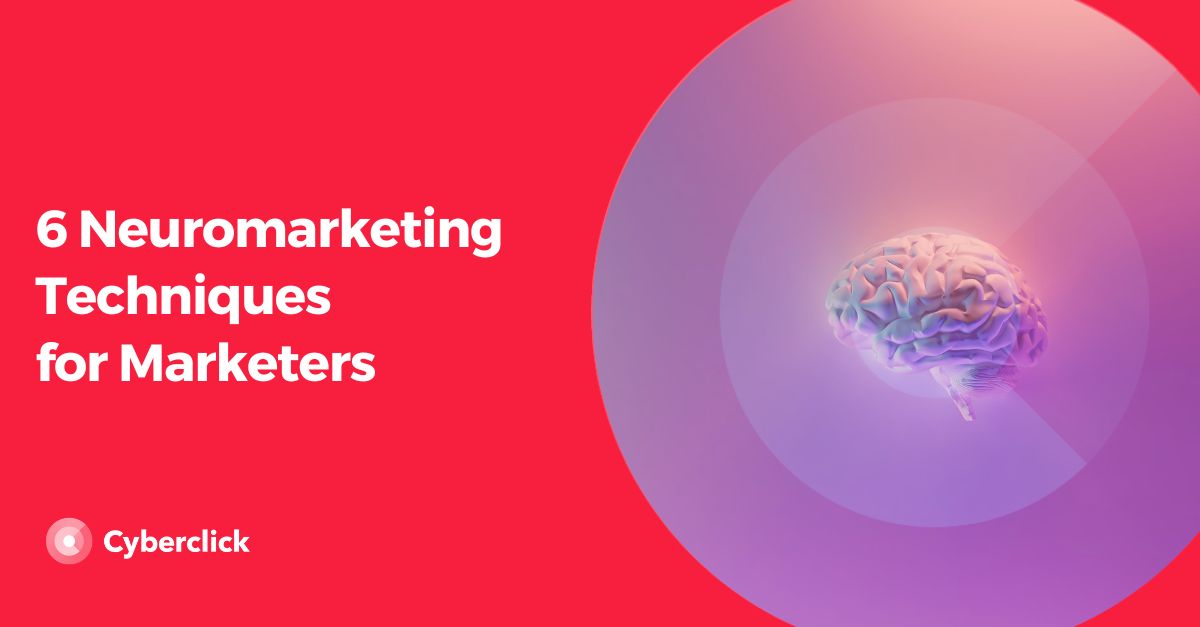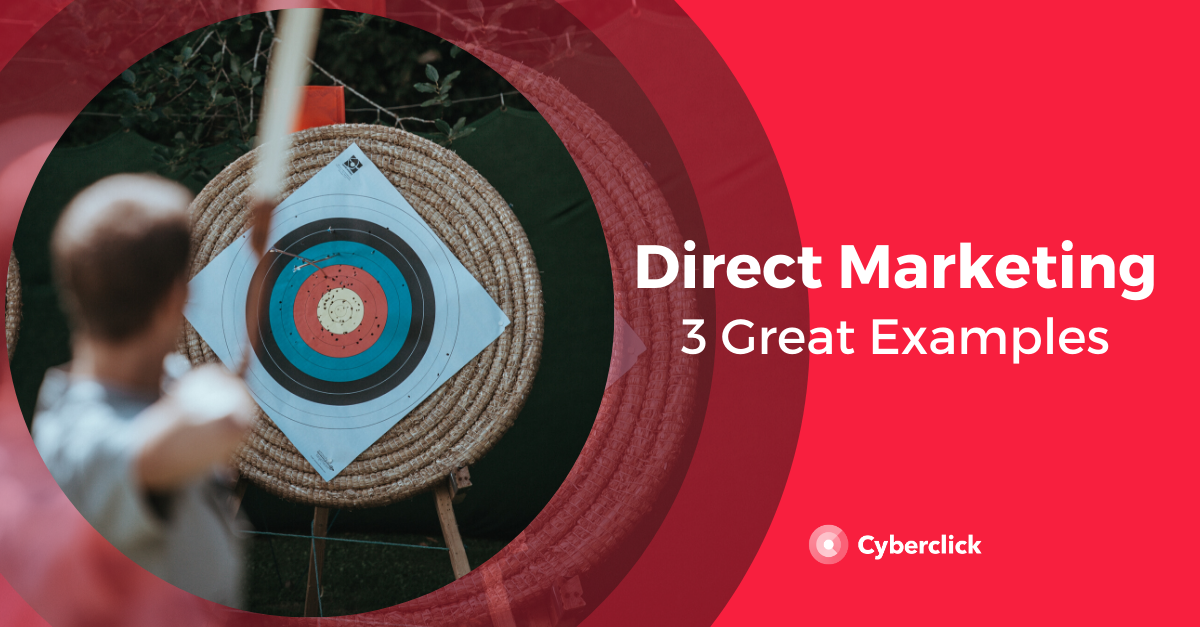Need inspiration for your next marketing campaign? Have you tried different strategies, but none of them have achieved the results you're looking for?
In this complete guide, you’ll find 150 different types of marketing. We're sure there's a lot you haven't tried yet that could help you when planning your next campaign, so let’s dive in
150 Types of Marketing, From A to Z
A
- ABM (Account-Based Marketing): B2B marketing technique in which a promotion is not aimed at a single person, but at an entire team or company.
- Agile Marketing: A marketing style based on the software development methodology of the same name. It is characterized by its flexibility and dynamic workflow.
- Affiliate Marketing: Type of marketing based on promoting third-party brands, websites, products, or services in exchange for a commission.
- Affinity Marketing: A strategy in which an organization and a company partner to reach a wide base of consumers that share similar interests.
- Alliance Marketing: A strategy similar to affinity marketing, but going one step further, as both brands cooperate to jointly sell a product or service.
- Ambient Marketing: Unconventional marketing technique that promotes products and services in usual locations. This style requires a lot of creativity.
- Ambush Marketing: A type of marketing that relies on trying to associate the brand with an event without being an official sponsor of the event.
- ATL (Above The Line): Marketing that uses mass media to target a broad audience.
- Augmented Marketing: Marketing technique based on adding value to a product with an innovative offer, such as the option to purchase AppleCare when buying an iPhone.
B
- Behavioral Marketing: Automated marketing based on user behavior, in which user actions trigger pre-determined communication flows.
- Big data: use and process large amounts of data to improve the accuracy and effectiveness of marketing campaigns.
- Black Hat SEO Marketing: Marketing that uses unethical SEO tactics and is generally banned by search engines. It will only generate short-term results.
- Blended marketing: Blending traditional (offline) and digital (online) marketing channels to attract attention from users.
- BTL (Below The Line): Segmented marketing that is not used by mass media.
- Brick and Mortar Marketing: Any form of marketing that is applied in a retail store. For example, special promotions in many supermarkets or large areas.
- B2B (Business to Business): Marketing aimed specifically at other companies.
- B2C (Business to Consumer): Marketing aimed specifically at consumers.
- B2P (Business to People): Marketing based on a more personalized approach. It aims to connect with people on a more intimate level than conventional advertising.
C
- Channel Marketing: Marketing that works with third parties to launch your product or service in the market.
- Catalog Marketing: Type of direct marketing based on sellers sending prepared catalogs directly to consumers. Catalogs typically include items grouped together in a printed piece or online store.
- Cause Marketing: Activist marketing with the purpose of bettering society and encouraging corporate social responsibility.
- Celebrity Marketing: Think of this as the original influencer marketing. It is a marketing strategy based on associating a brand with someone famous.
- Call Center Marketing: Marketing based on cold calling people to speak about your product. This is done by call center departments of a brand.
- Cloud Marketing: Using different channels (websites, social networks, and email) to offer the same marketing message.
- Computational Marketing: Computer-based marketing that aligns consumers with the right campaigns for them.
- Community Marketing: Marketing that nurtures relationships with existing customers, rather than looking for new ones.
- Concentrated Marketing: Marketing strategy that develops a specific product for a very defined target audience.
- Content Marketing: Creating and distributing content in different formats in order to attract consumers to the brand.
- Contextual Marketing: Marketing tactic of customizing the online content that users see based on who they are and what they are doing.
- Conversational Marketing: Marketing through chatbots, AI, or voice assistants that is based on conversations around a product, service, or consumer need.
- Cooperative Marketing: Two or more companies cooperating to sell a product or service.
- Corporate Marketing: Marketing focused on promoting and managing brand perception.
- Crisis Marketing: Marketing strategy for responding to crises, either within a company or society at large.
- CRM (Close Range Marketing): This is a type of proximity marketing. It works by using Wi-Fi or Bluetooth signals to send content to people near a given location.
- Cross Media Marketing: Marketing that puts a marketing message in front of the customer through different channels.
- CTA (call to action): Marketing tactic based on placing clearly visible and generally interactive elements that indicate the user the next step to be taken.
-
Cultural Marketing: Marketing based on creating campaigns for a particular culture or demographic.
D
- Database Marketing: Marketing strategy that collects and analyzes customer information to implement marketing actions.
- Defensive Marketing: Marketing aimed at protecting a company's position within a market.
- Demarketing: Marketing that, for strategic reasons, is aimed at reducing demand or limiting growth.
- Differentiated Marketing: Marketing strategy based on launching specific campaigns to different audience segments.
- Digital Marketing: Marketing that uses digital technologies, like websites or mobile applications.
- Direct Marketing: This is used widely to sell products or services directly to the consumer, rather than through a retailer. It's about communicating one-to-one with the consumer through cold calls, emails, text messages, TV or radio ads, brochures, digital newspapers, or magazines.
- Disruptive Marketing: Finding new approaches to promote a product, whether adopting a strategy, changing the product, or creating something innovative.
- Diversity Marketing: Marketing focused on recognizing the different origins of consumers and adapting messages to them.
- Drip Marketing: Marketing that sends a series of scheduled emails to a database.
-
Door-to-door Marketing: A marketing tactic based on physically visiting people's homes with the intent to promote a product or service.
E
- Ecommerce Marketing: Marketing based on the promotion of online stores.
- Email Marketing: Sending emails to a distribution list. Email marketing is most effective for driving loyalty.
- Emotional Marketing: Campaign-based marketing that appeals to customer feelings rather than logical purchasing decisions.
- Entrepreneurial Marketing: A type of marketing in which individuals execute marketing strategies.
- Evangelism Marketing: Consumers become brand evangelists and promote the brand. This is similar to multi-level marketing.
- Event Marketing: Organizing events to increase brand awareness and drive sales.
- Experiential Marketing: Creating immersive experiences to promote a brand, product, or service.
F
- Field Marketing: Marketing that meets potential customers in a given location.
G
- Geomarketing: Marketing based on users' location. It can be used in all aspects of the marketing mix–product, price, promotion, and place.
- Global Marketing: Marketing strategies executed internationally.
- Green Marketing: Marketing that promotes the "green" aspects of a product or service.
- Growth Hacking: Marketing techniques that employ analytics, creativity, and social media to generate rapid growth.
- Guerrilla Marketing: Marketing that promotes a brand, product, or service in a creative and unconventional way.
H
- Humanistic Marketing: Marketing based on the promotion of universal values and feelings.
- Horizontal Marketing: One company associating with another in a related niche to promote a product or service.
I
- Inbound Marketing: Marketing methodology based on attracting the customer to the brand.
- Influencer Marketing: A marketing tactic that relies on social media users to expand the reach of brand messages.
- Informational Marketing: Marketing based on explaining the details and characteristics of a product or service.
- In-Game Marketing: Marketing tactic based on promoting a product or service within a game.
- Interactive Marketing: Marketing in which consumer interactions generate specific reactions.
- International Marketing: Marketing a product or service in multiple countries.
- Internet Marketing: Marketing that takes place on the internet.
- In-store Marketing: Promotional strategies carried out in a physical store, for example, promotion special offers with signage.
- Industrial Marketing: Marketing in which one company tries to sell industrial products or services to others.
L
- Long Tail Marketing: Targeting a number of niche markets, rather than a larger segment.
- Loyalty Marketing: Marketing focused on retaining existing customers.
- Location Marketing: Type of marketing that aims to promote a place or destination.
- Local Marketing: Marketing campaigns that are directed to people physically close to the point of sale.
M
- Mass Marketing: Marketing that intends to sell a product or service to as many people as possible.
- Mobile Marketing: Marketing based on creating campaigns specially designed to be consumed over mobile.
- Multi-Level Marketing: Marketing that seeks to make customers sellers of products. Generally, this is not a very ethical style of marketing.
- Merchandise Marketing: Creating awareness and customer loyalty through a point-of-sale display.
N
- Neuromarketing: Marketing based on the study of the brain and its influence on consumer behavior.
- Newsletter Marketing: Type of email marketing based on sending periodic newsletters to mailing list members.
- Niche Marketing: Targeted marketing for a small, market-specific segment.
- New Media Marketing: Marketing that uses the latest channels and mediums to reach customers.
O
- Offline Marketing: Marketing based on advertising outside.
- Online Marketing: Marketing campaigns created for internet consumers.
- Outbound Marketing: Marketing based on direct customer targeting (as opposed to inbound marketing).
- One-to-One Marketing: Interacting directly and independently with a single consumer.
- Offensive Marketing: Attacking a competitor's weaknesses. A good example is Wendy’s snarky viral tweets.
P
- Performance Marketing: Digital marketing based on a pay-per-result model.
- Permission Marketing: Marketing based on obtaining the customer's permission to send promotional content.
- Personal Marketing: Strengthening an individual's reputation and position in the job market.
- Personalization: A marketing tactic based on tailoring messages to different users.
- Persuasion Marketing: Marketing that leverages human psychology to form opinions.
- Post-Click Marketing: Interacting with web visitors after they have clicked on a company's ads.
- PPC (Pay-per-click): A marketing strategy that works to bring traffic to the brand website in exchange for payment per ad-click.
- Product Marketing: Type of marketing aimed at increasing the demand and use of a product.
- Promotional Marketing: Offering an extra incentive to customers to purchase a product or service.
- Proximity Marketing: A geo-marketing strategy based on contacting customers when they are near a specific location.
- Public Opinion Marketing: Marketing that aims to change popular opinion around an organization.
- Pull Marketing: Generating leads in a non-intrusive way.
- Point-of-sale Marketing: Marketing aimed at increasing sales in a physical store by placing items near the point of sale.
- Push Marketing: Marketing that proactively shows a product or service to an audience that is not aware of it.
- Partnership Marketing: A marketing strategy in which two companies partner to showcase their brand to a new audience.
R
- Relationship Marketing: Marketing that builds and nurtures customer relationships.
- Real-Time Marketing: A marketing strategy that uses real-time user data.
- Remarketing: Marketing strategy based on retargeting customers who have already interacted with the brand.
- Reputation Marketing: Improving the consumer perception of a product or service.
- Retail Marketing: Promotion of goods and services within a retail context.
- Referral Marketing: Marketing tactic aimed at making customers become brand ambassadors who recommend a brand, product, or service to their own network.
S
- Seasonal Marketing: Marketing focused on promoting products or services at certain times of the year.
- Segmented Marketing: Marketing focused on a specific, well-defined audience.
- SEM: Marketing that places ads on search engine result pages.
- SEO: Marketing tactic based on positioning the pages of a website in the first search engine results.
- Service Marketing: Marketing aimed at promoting a service rather than a product.
- Shotgun Marketing: Marketing designed to extend the reach of campaigns to as many people as possible.
- Synchronized Marketing: A marketing strategy based on stimulating demand for seasonal products during the off-season.
- Social Marketing: Influences people to take actions that are beneficial to themselves and their communities.
- Social Media Marketing: Marketing campaigns through sites like Facebook, Instagram, Twitter, etc.
- Storytelling Marketing: Approaching the user through stories that reflect brand values.
- Sample Marketing: Marketing tactic based on offering users free product samples.
- Sensory Marketing: A marketing tactic that seeks to appeal to all senses in relation to a brand.
- Scientific Marketing: The systematic study and application of marketing activities and how they impact consumer behavior.
T
- Testimonial Marketing: Type of marketing based on sharing real stories from brand customers.
- Traditional Marketing: Strategy-based marketing with a long history, for example, press ads, direct mail, brochures, and more.
- Transactional Marketing: Marketing that focuses on increasing efficiency and sales volume.
- TTL (Thorugh The Line) Marketing: A marketing technique that integrates ATL and BTL marketing.
- Technical Marketing: Marketing that is based on the characteristics and technical specifications of a product.
- Telemarketing: Marketing tactic based on cold door calls.
U
- Undercover Marketing: Marketing based on advertising something to someone without the receiver realizing it.
- User-Generated Marketing: Strategies that allow consumers to be part of the campaign.
V
- Voice Marketing: Marketing through virtual assistants like Alexa.
- Video Marketing: Using video to promote a product or service.
- Viral Marketing: Marketing aimed at going viral with users.
- Vertical Marketing: Targets certain market sectors, like gyms and health food stores.
W
- Wikimarketing: A marketing technique based on creating and updating product and brand reference articles.
- Word of Mouth Marketing: Marketing strategy aimed at having customers recommend a product or service.
Responsable de la estrategia de contenidos y visibilidad en Cyberclick, con enfoque Allbound y especialización en posicionamiento SEO, GEO y automatización con IA. Gestión avanzada del CRM con HubSpot: base de datos, workflows, lead nurturing, scoring y reporting. Experiencia en marketing digital, comunicación corporativa y periodismo, uniendo estrategia, creatividad y tecnología para captar y convertir leads cualificados.
Responsible for content and brand visibility strategy at Cyberclick, with an Allbound approach and specialization in SEO, GEO (Generative Engine Optimization), and AI-powered automation. Advanced HubSpot CRM management: database segmentation, workflows, lead nurturing, scoring, and reporting. Background in digital marketing, corporate communications, and journalism—combining strategy, creativity, and technology to attract and convert qualified leads.






Leave your comment and join the conversation